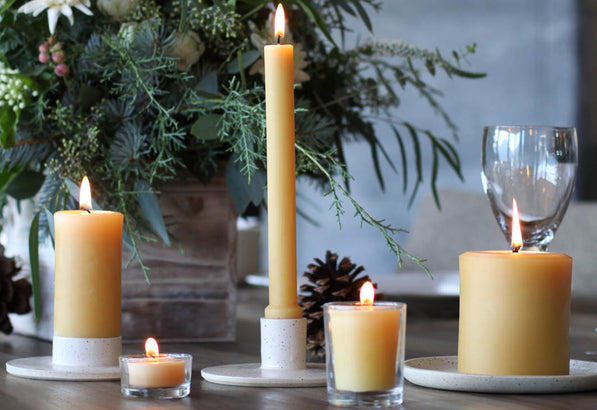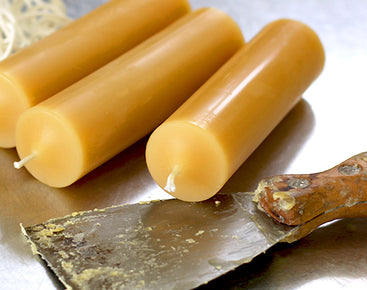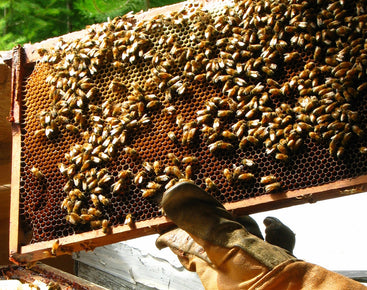It is important to consider your burning style when deciding which beeswax candle to choose. Candlesticks are a good option if you like to burn candles for a short period of time. Pillars are great if you tend to burn candles for several hours at a time. Votives are low maintenance and can be burned for various lengths of time but must always be used with a snug fitting votive cup. Learn how to properly burn different types of beeswax candles by reading the tips below.
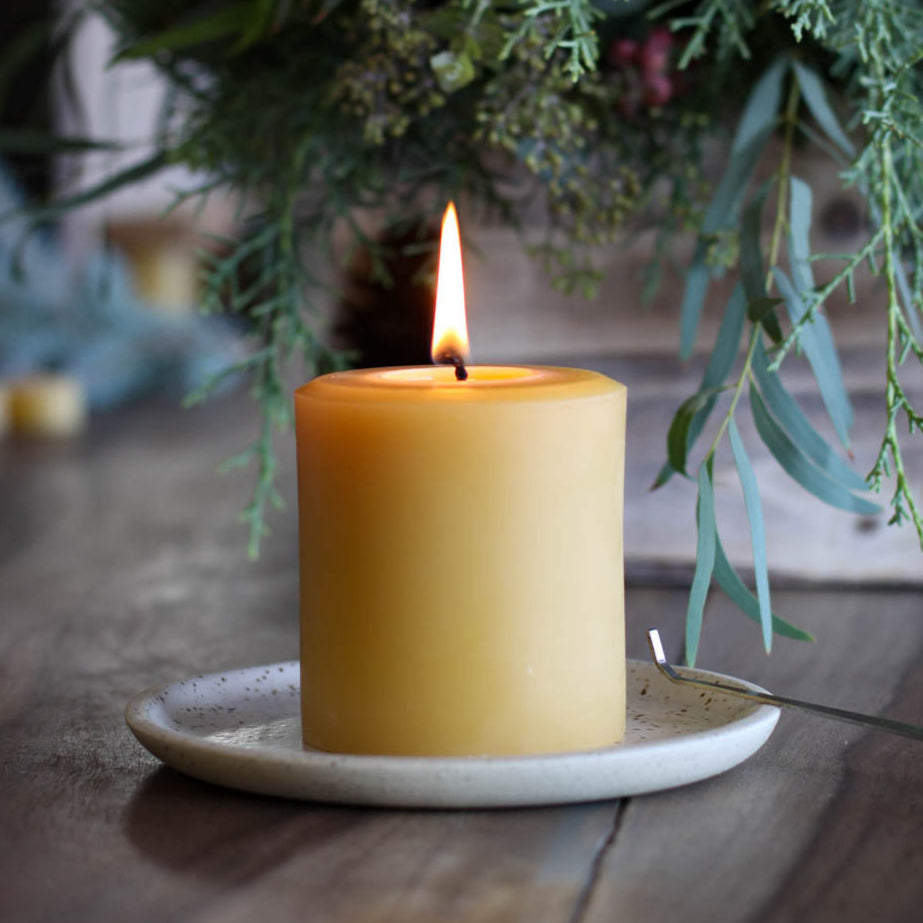
Pillars
Pillars require regular attention, but when properly cared for they will burn completely and evenly without tunneling or leaving excess wax. Always place pillars on a heat- and flame-resistant plate. Trim the wick to ¼" before each lighting, and burn for at least 3 hours at a time to allow the wax pool to reach the outer edge. Periodically “hug” or fold the edges inward to maintain an even burn. To extinguish, gently dunk the wick into the wax pool and straighten it. For best results, light your candle from the base of the wick, not the tip.
Please note:
Hurricane lanterns or high-walled glass holders are not recommended, as they trap heat and may cause the wax to spill over. Reduced airflow can also lead to smoking and darkened glass.
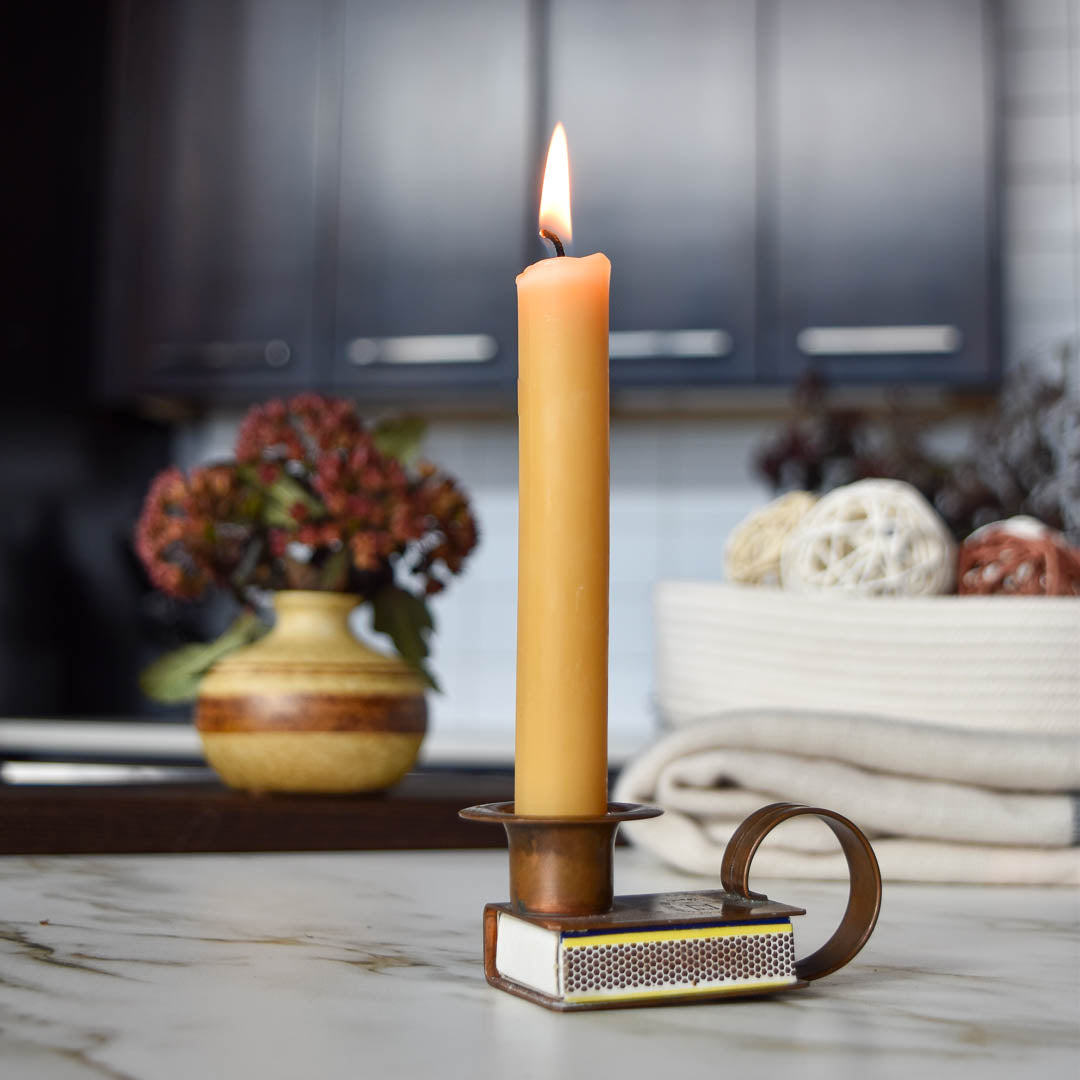
Candlesticks – Tapers, Bases, Columns, and Tubes
These candles must fit snuggly in a secure holder. Generally, the wicks do not need to be trimmed, but if they appear too long or start to develop a carbon cap you should trim to ½”. Candles should be extinguished before trimming and then relit. Wicks trimmed too short or broken off may cause dripping to occur as the candle melts more wax than it can burn. Be sure to extinguish the flame of your candle before it reaches your holder as the heat may crack some glass holders.
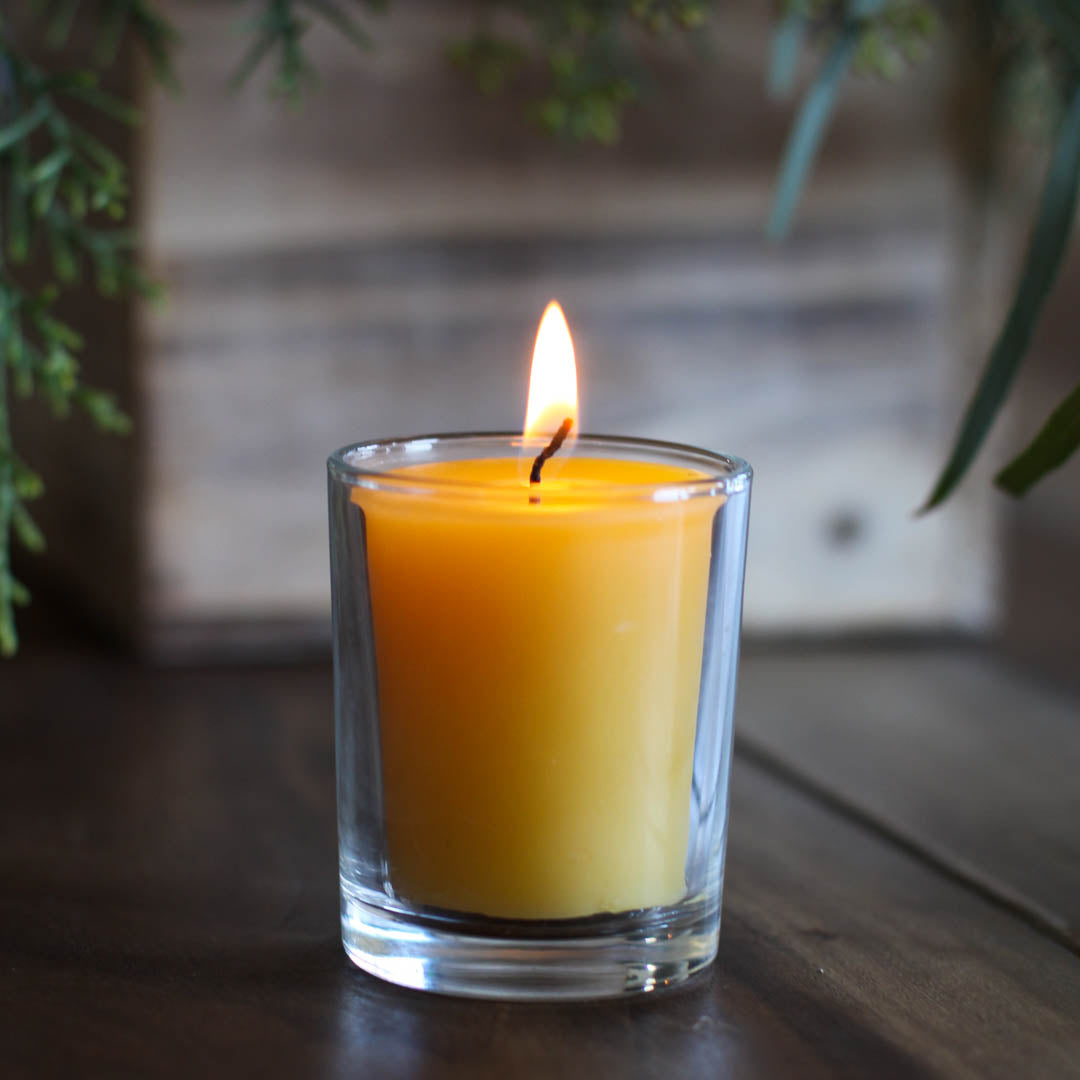
Votives
Because Votives are designed to fully liquefy they must be burned in a snug fitting cup. Do not trim the wick of a Votive before lighting. Only trim the wick of a votive if the flame is flickering excessively or producing smoke in a draft free environment. Votives have a large wick tab to keep the flame centered and disperse heat for a more complete burn. Be aware that in cool temperatures especially thick holders or cold surfaces may draw heat away from the candle which may cause some wax to be left behind around the edges. After burning, place the cup in the freezer for easy tab and wax removal.
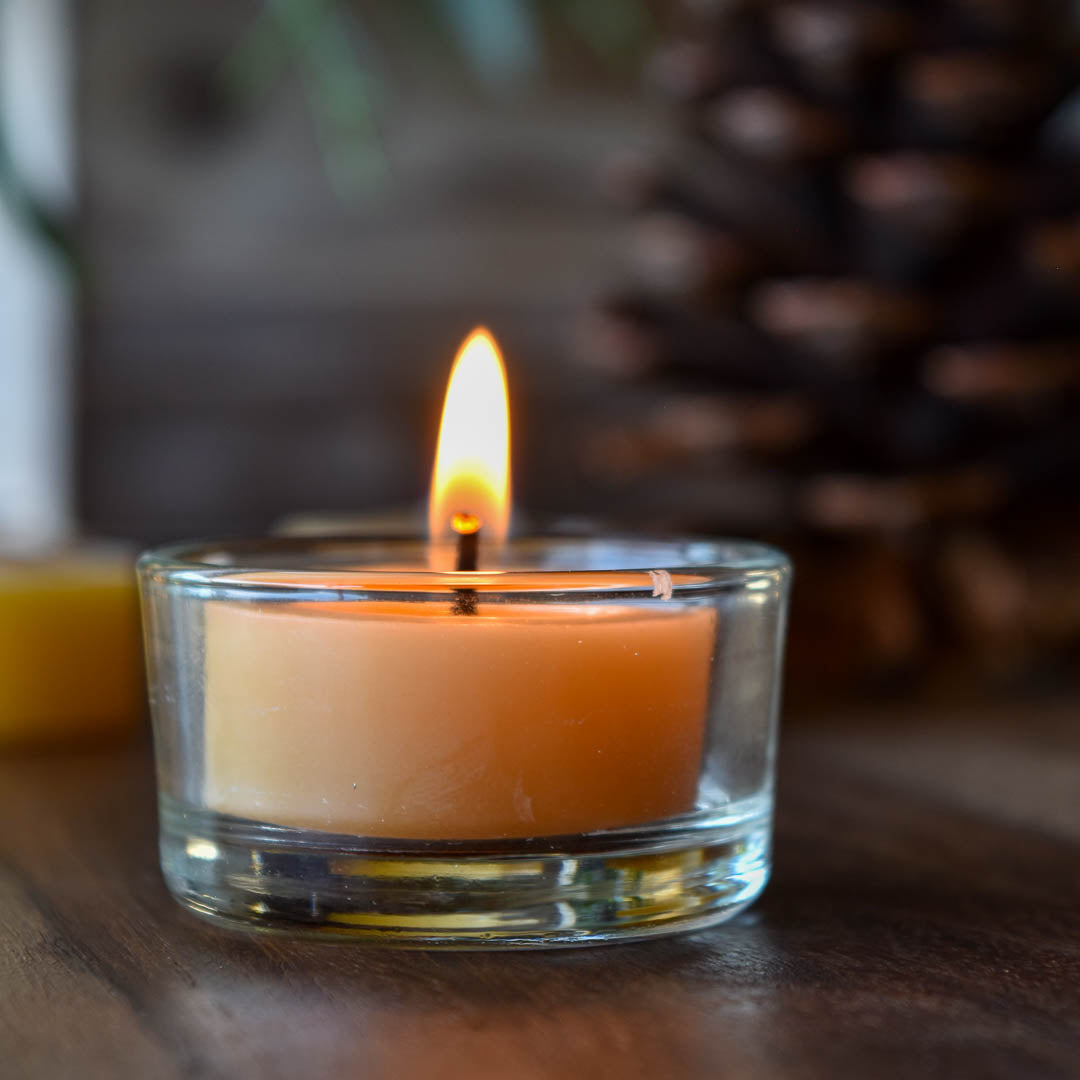
Tealights
Tealights must be burned in cups, either those provided or other cups made specifically for the shape. They are designed to fully liquefy as they burn. You don’t need to trim the wick and they are best burned in one lighting. If less than half the wax is left when you extinguish your candle it may be difficult to relight and/or cause an incomplete burn. Be aware that in cool temperatures especially thick holders or cold surfaces may draw heat away from the candle which may cause some wax to be left behind around the edges. After burning, place the cup in the freezer for easy tab and wax removal.
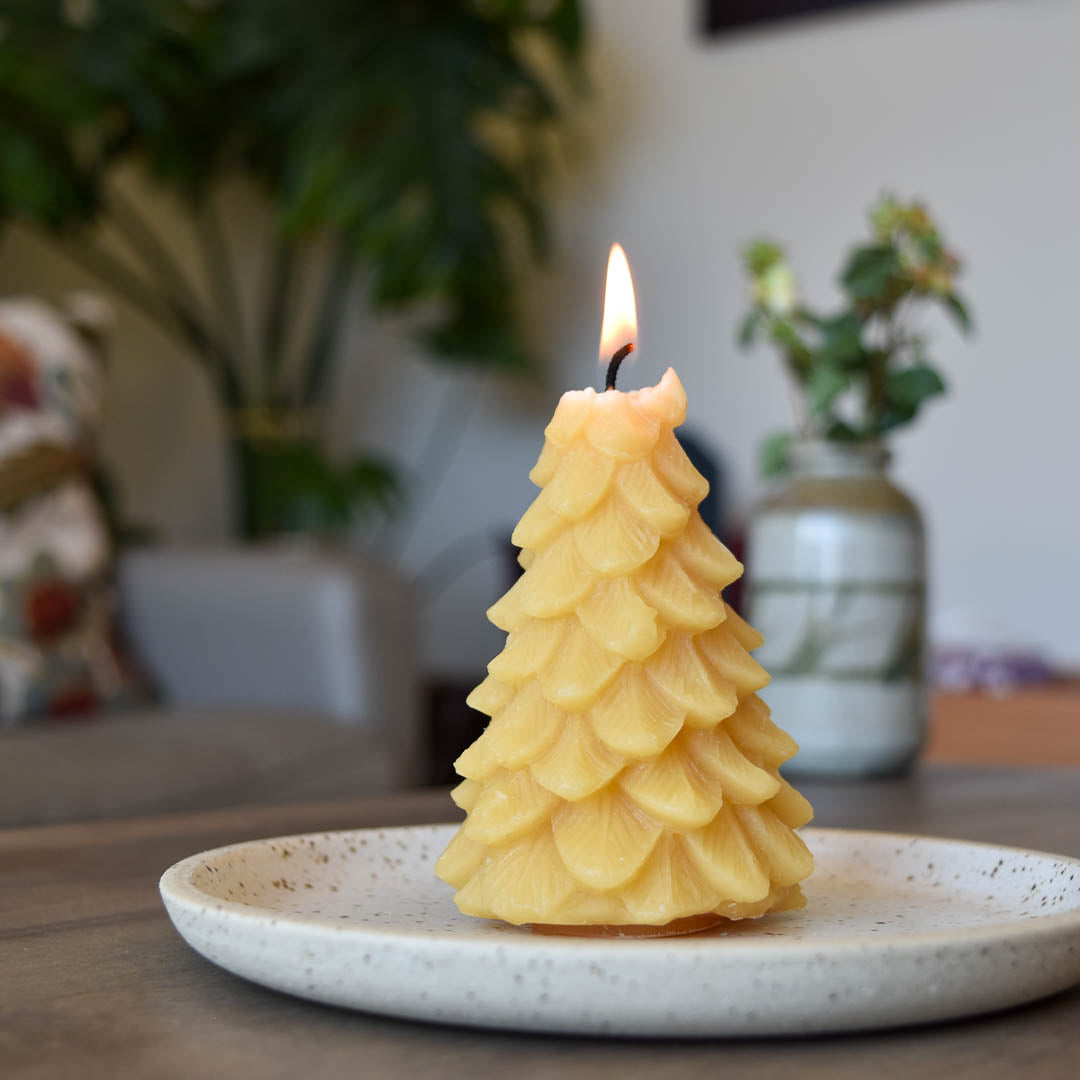
Ornamentals
Always place Ornamentals on a pillar plate. Due to the intricate design of our decorative candles, you may find they need extra care. For example, the petals of the Ponderosa Pine Cone may fall onto your pillar plate. You can slowly feed the fallen wax back into the candle. When burning candles with varying diameters, you may need to extinguish the flame when the melt pool gets too close to the edge. Let the wax cool and relight.
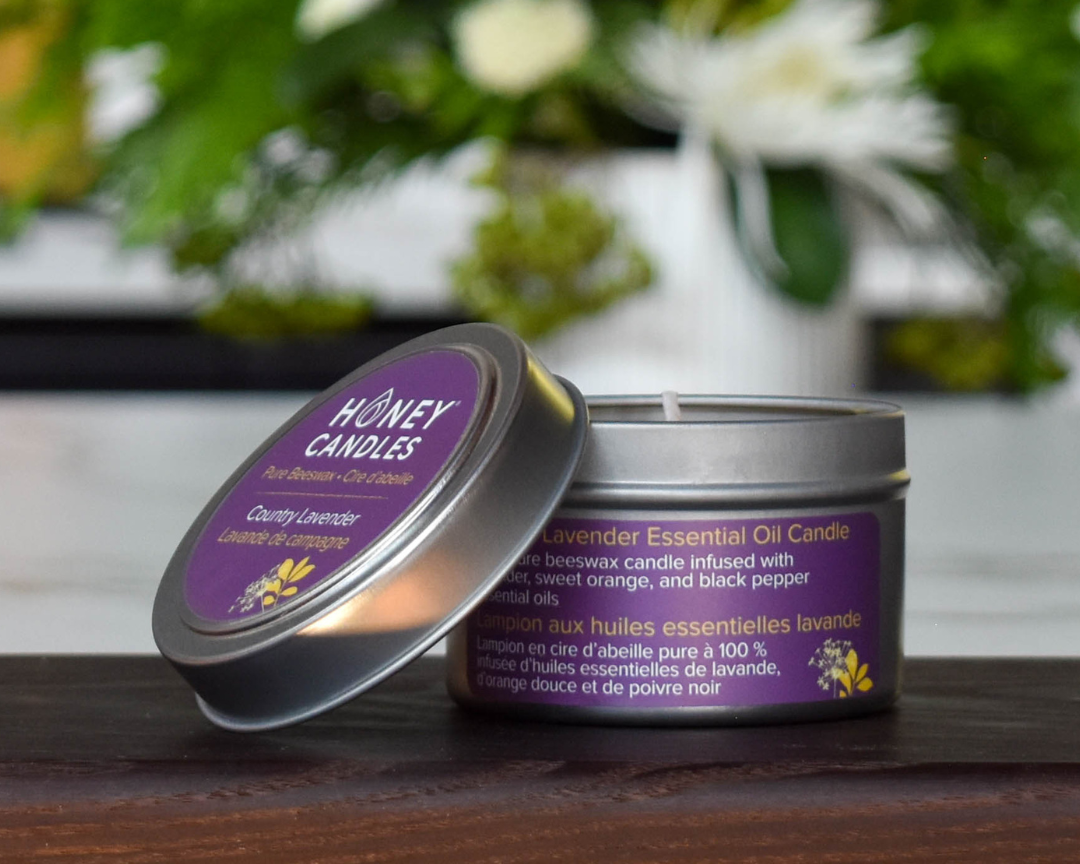
Tins
Tins get very hot and must be burned on a heat resistant surface. There is no need to trim the wick before lighting for the first time. If you notice the flame flickering or smoking extinguish the candle, trim the wick, and relight. To avoid tunneling, always burn tins for long enough to let the wax pool melt to the outer edge. Dunk the wick in the wax pool to extinguish.

